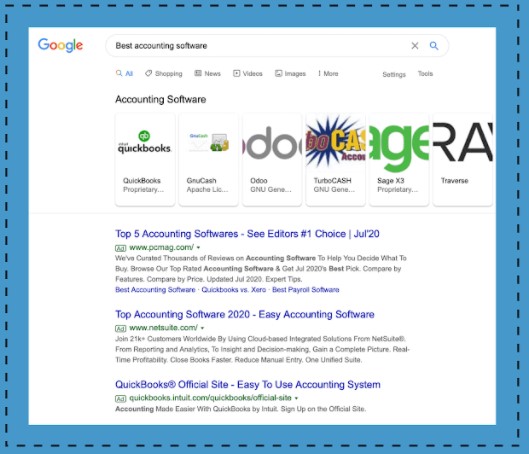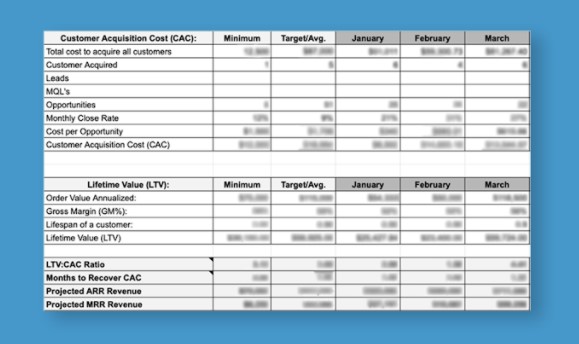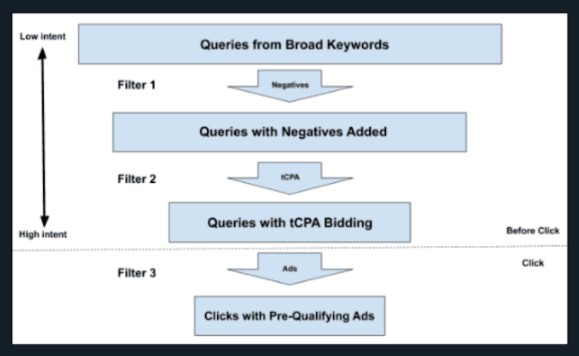Many SaaS marketers are working diligently but they are just not seeing the marketing qualified lead (MQL) growth they’re striving for.
On August 12, I moderated a sponsored Search Engine Journal webinar presented by Garrett Mehrguth, CEO, Directive.
Mehrguth explored:
- Actionable ways to make SaaS brands more discoverable on search engines.
- Strategic methods to build brand impressions.
- The actual math behind why the current marketing funnel is financially broken.
Here’s a recap of the webinar presentation.

SaaS Marketing: A Differentiated Approach
Have you ever felt helpless to grow your pipeline?
Are you working hard, but not getting results?
You aren’t alone.
Many marketers are experiencing the same things – for a plethora of reasons.
But one of the biggest reasons is that things have changed with the funnel.
In the old funnel, marketers needed to do top of funnel awareness campaigns because consumers can’t
discover the brand without them.

But then websites like Amazon and Yelp started to grow by aggregating people’s opinions of a product.
And now, people are able to get their own interest in something, evaluate their options, then become aware of what exists, and so on.
In this new funnel, what’s so so important is understanding the reality you’re playing.
So how do we adapt to this new reality as SaaS marketers?
The Big Idea: Your Brand Is Better Than Your Website
The big idea that we need to embrace here is that your brand is now more important than your website.
This isn’t to say your website doesn’t matter – it’s just that it matters less compared to your brand.
Bottom of Funnel: Websites Are No Longer Ranking
If you look at the B2C query [best day trading software], you’ll find four ads above the fold:

Here, your click-through rate doesn’t widely vary from the fourth spot to the first spot.
Mostly your CPC does OK.
Down below, there are SERP features and then different third-party review sites.
What’s really interesting about this is that individual websites and their core pages are no longer ranking – and that’s for a B2C query.
Now, if you look at a B2B query for [best accounting software], you’ll see SERP features at the top, four ads, and then PCMag.com, Capterra, and other review sites.

QuickBooks, one of the most popular software companies among business owners for accounting have a very strong market share, yet you won’t see their website anywhere in the organic listings for this query.
It’s not that QuickBooks has bad SEO.
It’s that the search engine results pages have changed.
If consumers have expressed that they want to hear what other people are saying before they buy a $5
burrito, then they will surely want information before they buy a $20,000 software.
And so what Google decided to do here was put their searcher first.
They realized that these searchers want unbiased information.
So if you aren’t showing up on these queries, you’re missing out on up to 30% of your market share.
SEO is no longer about trying to get your website to rank for bottom of the funnel queries because it can’t – Google won’t allow it.
Another thing is that some third-party and review sites are starting to bid.
This is driving up the cost per click, decreasing the profitability, and it’s cutting competition.
This new reality is happening and we need to be aware of it.
Organic CTR
Almost all SaaS marketers still universally default to advertising at Google Ads.
The truth is, that’s not necessarily the best option.
If you advertise on Google Ads, you’re going to average a 2-4% click-through rate.
Let’s say 100 people are searching for that accounting software query.
If our plan to advertise the people with purchase intent on a search engine is G0ogle Ads, we’re only capturing 4% of the total addressable market.
While the number one organic result is now a listing on a third-party website.
This means you can be a startup accounting software company, build a great product, and get some raving fans(i.e, 10-15 users compared to the millions on QuickBooks).
Immediately, you’ll look like a true competitor to QuickBooks by simply paying to be X, Y or Z on a review site.
When you change your fundamental and understand how you can position your brand in a strong spot, you’ll have the chance to capture the number one spot and get up to 32% of market share.

With this, you almost have complete discoverability and that is an important part of being able to drive marketing qualified leads (MQLs).
Across millions of dollars of spend across multiple SaaS clients, Mehrguth’s team is averaging a 4% CTR.

You don’t necessarily want too high of a click-through rate because ideally, you want to use your ad copy to pre-qualify your clicks.
In other words, if you are required to do X amount of seats or X amount of price, a really great way especially if you’re a mid-market or enterprise organization who doesn’t win on price but instead on quality, you can include
base fundamental pricing in your ads.
Then you’ll essentially be able to disqualify the wrong clicks, qualify the right ones, and lower your cost per
acquisition (CPA).
Many SaaS companies have been brainwashed that the lower your CPA, the better.
What they do is they take your most expensive terms and they stop bidding.
Unfortunately, sometimes your most expensive terms are also your most valuable.

Even though third-party sites, such as Capterra and Software Advice, have much higher CPCs, they have much better close rates and cost per opportunity.
This means you are getting more qualified leads.
Financial Model
How SaaS owners decide to allocate capital is the most important part of marketing.
Simply reallocating where you spend your money can help grow your business significantly.

To do this, you can follow what’s called LTV:CAC modeling where you are going to understand the actual lifetime value versus the customer acquisition cost of all of your marketing channels.
There are two ways to proceed with this.
LTV:CAC SaaS Non-Trial
If you have a SaaS firm and you don’t do a free trial, here’s the spreadsheet you can use.

You also have a budget template where you can model out different scenarios and then look at each of your channels in real time.
It also allows you to put in all your numbers (i.e., at the product level) and calculate it.
You can run through any type of scenario and see what’s most efficient.
This is helpful because the second you start modeling this out, driving budget, and working on these types of elements, you’ll get much better alignment from your CFO and build trust with the CMO.
LTV:CAC SaaS Free Trial
If your SaaS offers free trial, you can use a simple but awesome model where you can see how much your team costing, software costing, ad spend, how many customers you want, etc.
And then it’ll compute your LTV:CAC ratio, as well as months to recover.
You can start to use it as a log to get better at forecasting budgeting.
Validated Tactics
If you’re the CMO of a mid-market to enterprise SaaS firm, here are a few validated tactics to consider if you want to increase your marketing qualified leads.
Paid tactics
- Google Ads
- Podcasts
- Review Sites
- Terminus
- Sponsored Webinars
Organic tactics
- SEO
- Content
- Partner Marketing
- PR
One thing you need to have in place before you get too deep in your tactics is to make sure you have the foundation right.
You may have all sorts of templates or tools to use, but that’s codependent on how people move through your funnel.
Ideally, anyone on your team should be able to go into your marketing platform, get the data they need, and be effective.
Nothing is more powerful than your team having the information they need when they need it – and being
able to actually do it themselves.
So now that you have your spreadsheet right, you’ll also need your data.
What’s next?
With revenue being such a big gap, you should also be thinking about OCT, or offline conversion tracking.
That would entail integrating SalesForce into your Google Ads.
The reason this is so important is because Google has come a long way and you can now trust Google Smart
Bidding.
Directive’s paid search team rebuilt all their accounts in Q2 and migrated away from the old-school way of thinking of single keyword ad groups and started bringing their clients into target CPA.
Now the issue with target CPA is how do you determine it if you don’t know your LTV:CAC ratio?
So this is why using the budget modeling template is really helpful.
1. Smart Broad Campaigns
The way Smart Broad campaigns work is that you’re going to “trust” Google’s engine.
You’ll want to integrate it with Salesforce using offline conversion tracking and then run broad keywords.
You can’t just let your account run wild so negatives are super critical.
Daily management is also extremely important.

2. Conversation Ads
One of the issues with SEO and PPC in the traditional sense is that you can’t control firmographic data.
Google has rolled out some white-label reports with industries and employee size, but the data’s not there yet.
But LinkedIn always had this phenomenal ability to give firmographic data.
For instance, you can target demand gen marketers with x amount of employees in these industries.
You can use “single persona ad groups or campaigns”, write essential one asset, and advertise to a specific target audience.
Now that conversation ads are here, it gets even better.
Conversation ads allow advertisers to “start conversations with professionals and business decision-makers via LinkedIn Messaging.”
You can use this to book a discovery call, leverage gift-giving as an offer, and so much more.
Mehrguth’s team has been working on this and saw exceptional results across the board.
3. Content Marketing with Partners
Content marketing is tough especially for SaaS companies that don’t have a brand.
Producing content is useless if you don’t have a distribution plan in place.
This is why your content marketing needs its promotion buit in.
PR is tough because you are trying to be the guest. Let’s simply reverse the roles.
Consider these ideas to boost your content marketing campaigns:
- Sour interviews.
- SaaS marketing competition.
- Friday roundtables.
Empowering People
Marketing starts with your team and needs to bubble up into your vision at a boil.
Create a culture where your team can submit new ideas and has their own model.
Share this Financial Model for Submitting New Content Ideas to your team members to encourage them to make a business case.
All of a sudden, you’ve just given your team rocket fuel.
They can now drive strategy, have complete alignment, know if a campaign’s going to be successful, and be fully empowered.
Q&A
Here are just some of the attendee questions answered by Garrett Mehrguth.
Q: You talked about branding. I often find it difficult to justify ROI for spend done behind branding. Have you ever come across such a dilemma?
Garrett Mehrguth (GH): A lot of times, people think about how much money they need to spend to grow.
What I’ve found is that in B2B, we have really long sales cycles.
It’s always challenging to get funding from finance to spend at the top of the funnel. We often get money for the bottom of the funnel because it’s easy to prove ROI quickly.
However, we know that the bottom of the funnel is co-dependent on brand, but it seems like the “results” come just from the bottom of the funnel.
However, time goes by, and you start to wonder why you haven’t built a brand.
So when you think about brand advertising, try to set your budget up to spend just enough, so you never stop, so that eventually you can prove it out.
From there, start to grow that budget slowly.
A small budget used strategically, that you let run its course, with incremental growth is a wise way to change your financial modeling and get more approval.
Q: Our SaaS is dipping our toes into marketing. What are the 1-3 tactics or channels I should focus my attention on so I can get some immediate wins and maximize my small budget?
GM: Review sites, Google ads, and case studies.
[Slides] SaaS Marketing: How to Never Miss Your MQL Goal Again
Check out the SlideShare below.
Image Credits
All screenshots taken by author, August 2020
Join Us For Our Next Webinar!
Beyond ROAS: Aligning Google Ads With Your True Business Objectives
Join Justin Covington, Director of Paid Channels Solutions at iQuanti, as he breaks down the Google Ads changes and show you how to use value-based bidding to drive measurable results.


